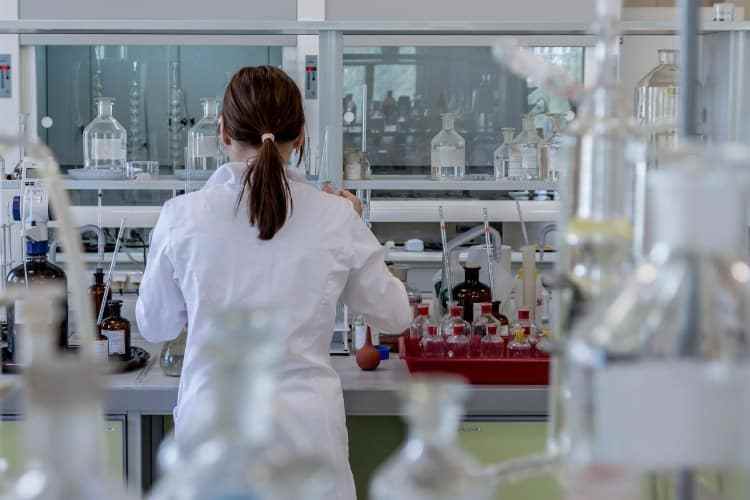
The 5 Main Branches of Chemistry for Beginners
June 6, 2019 - Emily Newton
Revolutionized is reader-supported. When you buy through links on our site, we may earn an affiliate commission. Learn more here.
If you’ve ever made a baking soda volcano, you’re already familiar with the basics of chemistry. Chemistry, as a whole, is the branch of science that deals with what things are made of and how they interact and combine. We can break this down into a variety of different categories that all focus on specific items. Let’s take a look at the five main branches of chemistry.
Organic Chemistry
Every living thing on our planet is carbon-based. You’ve got carbon atoms in every cell of your body, just like every other plant or animal on Earth. Organic chemists study these carbon compounds, including hydrocarbons which contain hydrogen, and different mixtures that include everything from nitrogen and oxygen to phosphorous, silicon and sulfur. Initially, this branch of chemistry strictly involved studying living organisms. However, as technology has advanced, it’s expanded to include hydrocarbon-based inorganics like plastics.
Organic chemistry makes an appearance in nearly every industry, from pharmaceuticals to the creations of dyes and detergents. Some high-tech materials have at least one organic compound in their makeup. The chemists who study this branch of chemistry spend their careers creating new compounds and figuring out new ways to improve old ones.
You may not have heard of Carl Djerassi, but he’s one of the most famous organic chemists of all time. Called the “father of the Pill,” Djerassi was the first to synthesize progestagen norethindrone. This is still an ingredient in modern-day birth control pills. He published more than 1,200 papers until his death in 2015, and many still consider him to be one of the most influential organic chemists of all time.
Inorganic Chemistry
If organic chemistry covers reactions where carbon atoms are present, inorganic chemistry covers everything else. These two branches of chemistry do tend to overlap, but the inorganic chapter is so broad that some overlap was inevitable. That baking soda volcano that we mentioned earlier is an example of an inorganic chemistry reaction.
Inorganic chemistry spans the globe and nearly every industry in it. Some branches, like bioinorganic chemistry, even seem like they’d be part of the organic chemistry blanket. However, instead of studying amino acids and other organic particles necessary for life, this branch studies the inorganic molecules that we need to survive, like vitamins and minerals.
William Lipscomb is one of the most famous inorganic chemists in human history. His study of boranes, or hydrides of the element boron, earned him the Nobel Prize in Chemistry in 1976. His work in chemical bonding has changed the way we look at inorganic chemical bonds. He was also the first to use X-ray techniques to study the structure of the boron molecules he was experimenting on.
Physical Chemistry
Physical chemistry, as its name suggests, blends aspects of physics and chemistry to study the properties of molecules. By understanding the features of each element, physical chemists have a better idea of how these elements combine and react with each other.
As with organic and inorganic chemistry, we can break down physical chemistry into a variety of different branches. Photochemistry studies the impact of light or photons in a chemical reaction. Electrochemistry studies how atoms change and mingle in an electrical current. There’s even chemical kinetics, which explores one thing — how fast chemical reactions happen.
If you’ve ever heard of a Faraday cage, used to block electromagnetic signals, you already have a passing familiarity with the best-known physical chemist of all time. Michael Faraday, born in 1791, spent his life studying electromagnetic induction and other uses for electricity. What makes this so exciting? It was more than 100 years before it became common in homes and businesses!
Analytical Chemistry
Whom do you call when you have a problem with your chemical reaction? The answer is an analytical chemist. These problem-solving scientists spend their days using chemistry as well as computers and statistics to figure out why something has gone wrong and how to fix it. You’ll often find them in service-related jobs across nearly every industry and in government and academic positions.
While automation has reduced some of the demand for analytical chemists, there are some things computers and robots can’t do. An analytic chemist may specialize in one industry or may branch out, employing their skills across multiple sectors.
Analytical chemistry is a relatively new field, making it challenging to pick out just one famous analytical scientist. One that did pop out to us is Professor Jonathan Sweedler, an analytical chemist at the University of Illinois who specializes in analytic neurochemistry — studying the chemicals of the brain and how they affect the body. It will be interesting to see what this field presents to us in the future.
Biochemistry
If biology is inherently organic, what could biochemistry be? Instead of studying hydrogen-carbon bonds, biochemists look into biological processes at the cellular level to figure out what makes us tick. This branch of chemistry overlaps with life sciences. However, instead of studying the living organism as a whole, it focuses on the atoms and molecules that make up the entire body.
This particular branch of chemistry may seem like it focuses entirely on human biology, but it can be a useful tool for understanding the biological processes of animals and plants as well. Sometimes, scientists will find something in flora or fauna that can impact human health either positively or negatively.
One of the most beloved science fiction authors, Isaac Asimov, was also a biochemist. He worked as a professor of biochemistry at the Boston School of Medicine from 1955 to the 1970s.
More Branches of Chemistry
Chemistry, like most scientific disciplines, is broad and varied. These are just five of the many branches. It’s possible to break down each of these into more specific fields of study. If you’ve ever wondered what makes us tick, or what makes baking soda and vinegar turn into a pseudo-volcanic eruption, chemistry might be the field for you.
Revolutionized is reader-supported. When you buy through links on our site, we may earn an affiliate commission. Learn more here.
Author
Emily Newton
Emily Newton is a technology and industrial journalist and the Editor in Chief of Revolutionized. She manages the sites publishing schedule, SEO optimization and content strategy. Emily enjoys writing and researching articles about how technology is changing every industry. When she isn't working, Emily enjoys playing video games or curling up with a good book.






